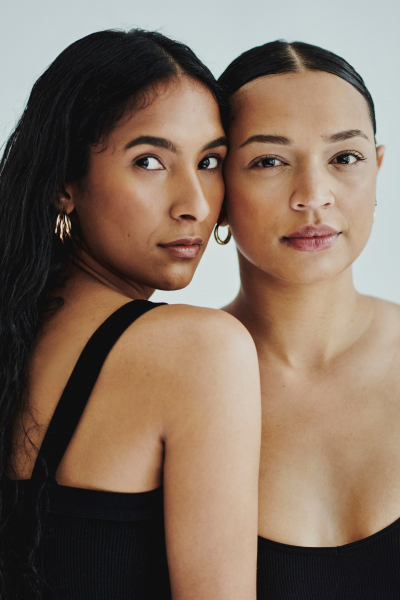
At-home remedies for hair growth can both be the stuff of legend (proven and passed down; like rosemary oil) or myth. Using castor oil for hair growth falls into the latter camp. And though the DIY hair treatment remedy won’t necessarily help with thinning hair, hair loss, or overall growth, pure castor oil may come with some other hair health benefits — when used correctly, of course.
“Castor oil is a type of vegetable oil that is extracted from the castor oil plant, Ricinus communis,” says board-certified dermatologist Naana Boakye, MD. The oil is made from castor beans, and has long been used to make soap, lubricating products, and coatings. “It’s rich in ricinoleic acid, a monosaturated fatty acid, which helps the oil act as an occlusive moisturiser.” Castor oil is thick and often pale yellow in hue and, according to Boakye, contains antimicrobial properties due to the ricin and ricinoleic acid from fungus and other microbes.
One thing castor oil won’t do? Help your hair grow. Read on to learn what castor oil can do for your lengths — and why you should take extra care while using it, regardless of hair type.
What are the benefits of castor oil for hair?
“There is no scientific evidence to support that castor oil affects hair health,” says Boakye. “However, because it has rich moisturising properties, it can help lubricate the hair shaft, therefore decreasing the chance of breakage and possibly improving hair lustre.”
As noted by Dr. Boakye, castor oil is an occlusive moisturiser. Occlusive moisturisers help retain hydration by forming a protective barrier of sorts, keeping existing moisture in, but also preventing additional moisturising benefits from penetrating. This quality is likely why castor oil is an age-old remedy for both dry hair and scalp, and even dandruff.
The long and short of it? “Castor oil does not grow hair,” says Boakye. “It only assists in moisture retention.” Always opt for cold-pressed castor oil, which is made minus heat or harsh chemicals, and use sparingly for nourishing dry, damaged hair.
The downsides of castor oil
Both Boakye and New York-based trichologist Penny James of the Penny James Trichology Center warn of acute hair felting, a sudden matting that can occur when using castor oil. “Hair felting is when the hair suddenly becomes matted and tangled, and it can usually only be treated by removing the hair completely,” says Boakye. That means cutting it out.
James notes that the entirely undesirable outcome can be attributed to the oil’s high viscosity, aka quick build-up due to its syrupy thickness. This quality makes removing even a small amount of castor oil (we’re talking drops) a difficult feat, so be sure that the moisture you seek is worth (and not entirely undone by) the subsequent cleansing.
How to use castor oil in your haircare routine
James offers her castor oil advice with the caveat that, generally speaking, she’s not a huge fan. “Use sparingly on the hair and scalp,” she says. Should you wish to give the oil a try, though, James suggests mixing 1/4 ounce with 3/4 ounces of coconut oil before applying to the scalp for a massage, allowing the mixture to sit for 20 minutes. Shampoo the oil mask out of your hair and scalp and reach for a moisturising conditioner to finish.
Natural remedies can be some of the best methods of treating and tending to the hair and skin. But in the case of using castor oil for hair growth, it may be best to allow the long-loved myth to fade with time in favour of more effective (and hair-friendly) options.